Académie confucéenne Mukgyeseowon (묵계서원 및 안동김씨 묵계종택)
4.5Km 2024-07-09
1736-5, Chunghyo-ro Gilan-myeon, Andong-si Gyeongsangbuk-do
L'académie confucéenne Mukgyeseowon a été fondée en 1687, mais a été détruite en 1869, ne laissant que le hall des lectures dans son état original. Les bâtiments initiaux ont commencé à être reconstruit afin de restaurer complètement l'académie.
La maison principale Mukgye du clan des Andong Kim est située près de l'académie confucéenne.
Pavillion Manhyujeong (만휴정)
5.1Km 2023-01-18
42, Mukgyehari-gil, Giran-myeon, Andong-si, Gyeongsangbuk-do
Manhyujeong désigne un pavillon construit en 1500 (6e année du règne du roi Yeonsan-gun) ayant appartenu à Bobaekdang Kim Gye-haeng.
L'aspect actuel du bâtiment, qui a été modifié suite à diverses rénovations, illustre en partie le style architectural de la fin de la dynastie Joseon. Kim Gye-haeng, qui est à l'origine de ce pavillon, était un fonctionnaire qui a occupé divers postes gouvernementaux au début de la dynastie Joseon. Cependant, sous le règne tyrannique du roi Yeonsan-gun, il a abandonné le poste gouvernemental pour revenir dans sa ville natale. Cette figure historique avait d’abord bâti un petit pavillon près de l’étang Seolmot (actuellement Sosan 2-ri), mais comme celui-ci se trouvait à côté de la route, il a cherché un endroit plus calme pour construire le présent pavillon.
En entrant dans la vallée de l’autre côté du ruisseau de l’école confucianiste Mukgyeseowon à Giran-myeonm, vous pourrez trouver ce pavillon dans un magnifique endroit où l’eau du ruisseau de la montagne coule avec une cascade sur un rocher dans une vallée grandiose.
Oryuheon House / 오류헌
7.6Km 2025-08-12
18-15, Gireumaje-gil, Andong-si, Gyeongsangbuk-do
Oryuheon House, located near Imhaho Lake in Andong, Gyeongsangbuk-do, offers a chance to stay in a historic house from the Joseon period. The house, also known as Mogwa House, was built by Kim Won-jung, the third son of Sukjong-era rector of the National Academy Kim Bang-geol, when he formed a family of his own in 1678. It was designated as the National Folk Cultural Heritage No. 184. The door’s wooden frame and the open floor space exemplify the beauty of the literati house of the Joseon period, while the sarangchae (men’s quarters) and daemunchae (gate quarters) showcase the sophisticated architecture of the era. Anchae (women’s quarters) retains its original appearance, while the sarangchae was rebuilt in 1920. The construction of the Imha Dam in 1990 resulted in the house’s relocation to its present location.
The owner of the house resides in anchae and sarangchae. Guests have access to a space that includes a 2-kan room, which can accommodate up to 4, an open floor space, and a bathroom. Cooking is prohibited in the house, but guests can make use of a grill located on a small yard reserved for the guests. Korean-style breakfast, including menus like chicken porridge or lotus leaf rice, are offered free of charge in the morning. Nearby sights include the water sports activities in Imhaho Lake, Manhyujeong Pavilion, Hahoe Village, and Dosanseowon Confucian Academy.
Le Village d’Art de Jirye (지례예술촌)
7.7Km 2024-07-08
769, Bakgok-ri, Imdong-myeon, Andong-si, Gyeongsangbuk-do
+82-54-852-1913
Le village d’art de Jirye à Andong est le l’endroit par excellence où vous pourrez vivre une experience de la culture coréenne traditionnelle. Le site a été désigné comme village artistique en 1990. Le site propose de nombreuses activités liées aux traditions en Corée et à l'artisanat.
Maison Sanam
11.0Km 2024-12-17
26 Jungdong 2-gil, Pacheon-myeon, Cheongson-gun, Gyeongsangbuk-do
La maison Sanam, située à Cheongsong-gun dans le village de Pacheon-myeon, a été bâtie au XVIIIème siècle par Shin Chi-hak du clan Shin de Jangjeol-dong à Pyeongsan. Celui-ci avait huit frères, mais les maisons de six d’entre eux furent brûlées durant la guerre, et il ne resta plus que la sienne et celle de son frère aîné. Sa structure carrée est tout à fait caractéristique du Nord du Gyeongsanbuk-do. Elle a été enregistrée comme Trésor culturel du Gyeongsangbuk-do n° 340.
Maison Seobyeokgotaek (서벽고택)
11.1Km 2021-11-01
22-2, Jungdeul 2-gil, Pacheon-myeon, Cheongsong-song, Gyeongsangbuk-do
+82-54-870-6247
Située dans le village clanique des Shin de Pyeongsan à Jungpyeong-dong, la maison Seobyeok a été fondée à l’origine lorsque Han-chang Shin, un lettré de la fin de la dynastie Joseon, se maria et quitta la maison de ses parents. La maison fut agrandie par Chi-gu Shin en 1739 (15ème année du règne du roi Yeongjo). Le nom de la maison provient du nom de plume de Shin, et possède une surface de 6 pièces à l’avant et 4 pièces sur le côté, ce qui était une structure répandue sous la dynastie Joseon. La maison a été désignée Trésor folklorique du Gyeongsanbuk-do n° 101 le 30 novembre 1993.
Maison principale de Pansagongpa, branche du clan Shin de Pyeongsan (청송 평산신씨 판사공파 종택과 분가 고택)
11.1Km 2021-10-14
16, Jungdeul 2(i)-gil, Pacheon-myeon, Cheongsong-gun, Gyeongsangbuk-do
+82-54-870-6247
Située dans le comté de Cheongdong-gun, dans la province du Gyeongsangbuk-do, Pyeongsansinssi Pansagongpa Jongtaek est la demeure principale de la noble famille Shin de Pyeongsan. La maison a été bâtie par Shin Han-Tae durant le règne du roi Sukjong (1674-1720) de la dynastie Joseon. Et tout au long des siècles, depuis sa construction, la maison a abrité les descendants de Shin, Deuk-Cheong, le 15ème petit-fils aîné du général, Shin Sung-Gyem. La maison possède toutes les caractéristiques d’une demeure des classes aisées de la dynastie Joseon, avec des bâtiments rectangulaires entourant une cour centrale. Le domaine se compose de la Soteuldaemun (haute porte), du Haengrangchae (quartiers des serviteurs situés près de la porte), du Gotgan (grenier pour stocker le grain et d’autres objets), de l’Anchae (quartiers des femmes) et d’un pavillon.
Dans le même village se trouve d’autres maisons du clan Shin : la Seobyeok Gotaek et la Sanam Gotaek. L’entrée du village est protégée par d’épaisses pinèdes et par la rivière Yonjeconcheon, affluent du fleuve Nakdonggang, tous deux formant un magnifique cadre naturel à cette région riche en histoire.
Suaedang / 안동 수애당
11.1Km 2025-08-12
1714-11, Sugogyonggye-ro Imdong-myeon, Andong-si, Gyeongsangbuk-do
+82-54-822-6661
'Suaedang Traditional House was built by Ryu Jin-geol, also known by his pen-name of Suae, in 1939. This hanok-style house consists of three buildings that measure 29-kan (a traditional measurement that corresponds to the space between two columns) in total.
The main room, or jeongchim (7-kan at front and 2-kan at sides), has a half-hipped roof, and forms a‘ㄱ’-shape with the storeroom (10-kan at front), which also has a half-hipped roof. Originally located at 612 Sugok-dong, Andong-si, the house was relocated from a slight slope to a flat piece of land due to the construction of Imha Dam in 1987. Consequently, the Jeongchim was rebuilt at a lower level than before.
The Suaedang was renovated by modernizing the old-style facilities including the kitchen, toilets, and washroom without changing their external features, while the rooms and daecheongmaru (main floored room) were decorated with red clay and natural paint. Suaedang, with its beautiful panoramic view of the lake, was designated as Gyeongsangbuk-do Cultural Property No. 56.
Chalbanggong Head House / 찰방공종택
11.6Km 2025-08-11
23-8, Songsogotaek-gil Pacheon-myeon, Cheongsong-gun, Gyeongsangbuk-do
+82-54-873-6502, +82-10-9502-7611
The Chalbanggong Head House is a resting place in nature that is open to everyone. The house was built in 1933 as the head house of Chalbanggong Shim Dang, a 9th-generation descendant of Akeungong from Cheongsong Shim’s Family. The place was also used as a village school and is designated as local cultural heritage no. 13. The structure of the house is shaped like the Korean alphabet "ㄷ". The fact that the gate of the house is facing north is very unusual. The house is positioned next to the Songso Old House, which has 99 rooms, and is composed of Ondol rooms heated by firewood as well as a wide yard and a vegetable garden. The place provides a comfortable resting space for those who want to enjoy the atmosphere of a traditional Korean-style house that they cannot easily see in urban areas. The rooms are papered with traditional Korean paper and equipped with beddings. The house is located in a region that is so quiet you can barely hear a thing except the sound of birds and wind. There is an ancestral shrine in the head house that looks just like a warm grandma’s house.
Song jeong Historic House / 송정고택
11.6Km 2025-08-12
15-1, Songsogotaek-gil Pacheon-myeon, Cheongsong-gun, Gyeongsangbuk-do
+82-10-8746-6690
Cheongsong-gun in Gyeongsangbuk-do is a small village blessed with a spring flowing with natural mineral water, a beautiful valley with a majestic waterfall, and a mountain densely covered with pine trees. Thanks to this superb natural environment, Cheongsong-gun was designated as a 'Slow City' in 2011. Songjeong gotaek (The Old House of Songjeong) is located in the village of Deokcheon in Cheongsong-gun, which is one of the three richest and most prestigious families in the region.
These three wealthy families are said to have produced millionaires for nine generations - from Sim Cheon-dae during the reign of King Yeongjo of Joseon (r. 17224-1776) to the 1960s. In particular, it was a seventh-generation grandson, Sim Ho-taek (pen-name: Songso), famous as one of the richest men in Joseon, who built Songso gotaek (Old House of Songso) along with three houses for his three sons, including Songjeong gotaek for his second son Sim Sang-gwang (pen-name: Songjeong) around 1880. As the Cheongsong Sim Clan has lived in the area for many generations, Cheongsong is known as the village of the Cheongsong Sim family.
Covering a total area of about 10,000m2, Songjeong gotaek has a tall and grand front gate that symbolizes the wealth of the family. Upon entering by the gate, the large outer courtyard comes into view, followed by a gate connecting to the Old House of Songso on the right, and a walking path connecting to a well and a pine grove on the left. The square-shaped structure consists of a sarangchae (detached building), chaekbang (library), and daecheongmaru (main floored room). Passing through the entrance, there are the main building and the inner courtyard. Notably, the chaekbang has retained its original appearance from the time when it was used by Sim Sang-gwang.
Although the house is very large, its interior is simply and modestly designed according to the virtues favored by classical scholars. The rooms are floor-heated in the traditional way (by ondol) using wood, decorated with traditional hanji (Korean paper), and equipped with traditional bedding.
Songjeong gotaek offers visitors a variety of experience programs designed to promote the form of Korean classical music known as Gukak. It holds three major musical events each year including a pansori folksong program and a fusion gukak concert, attracting an audience of anywhere from 200 to 800 people to the courtyard of the house. Sometimes, families hold parties to celebrate their parents’ 60th, 70th, and 80th birthdays.
The low hill situated behind the house has a quiet walking path.
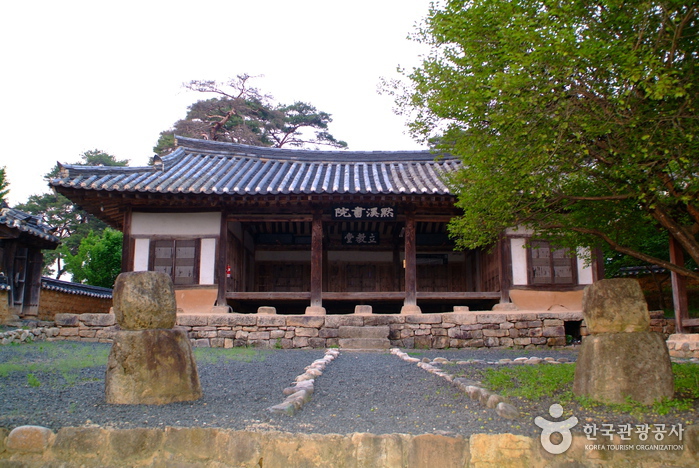

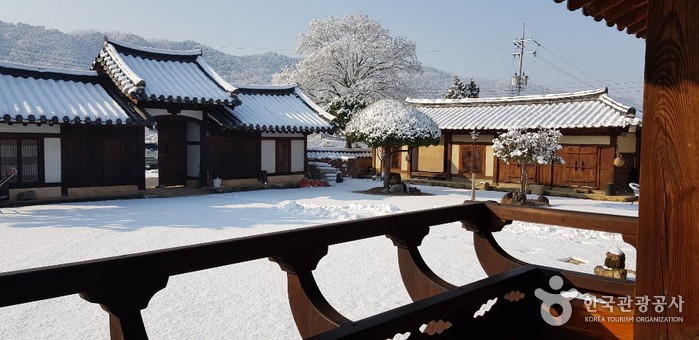
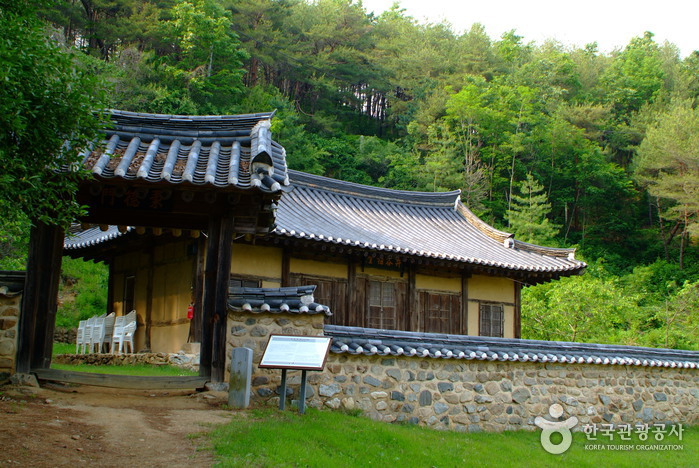
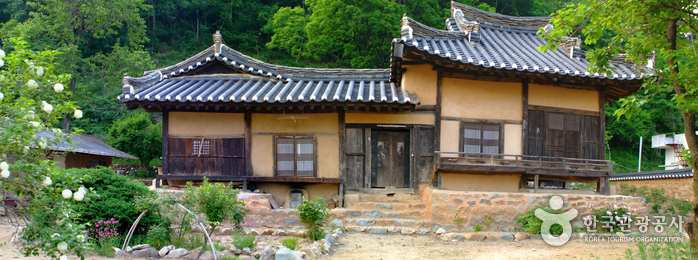
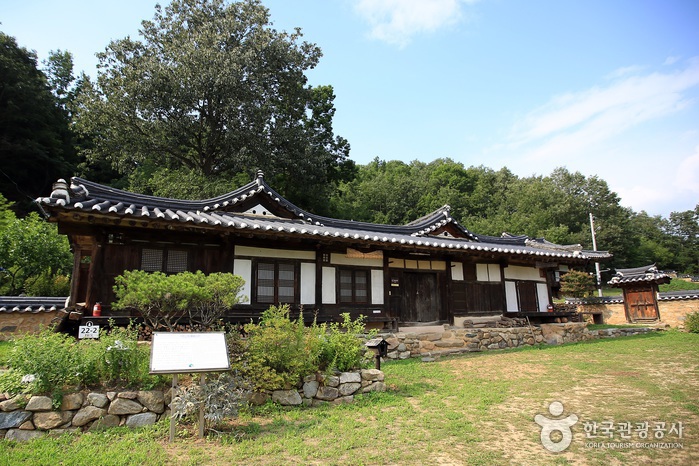
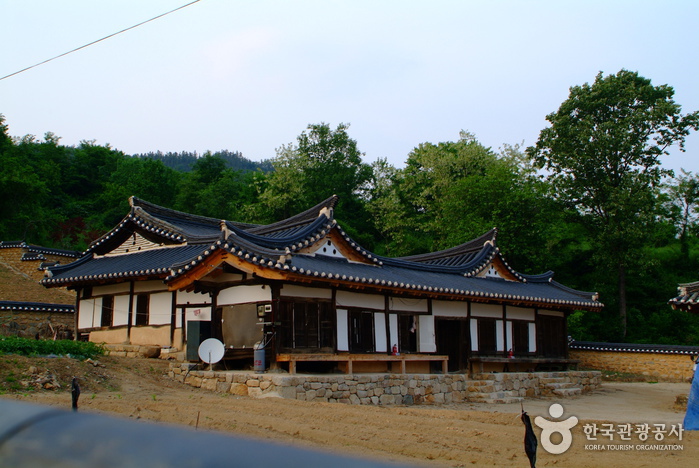
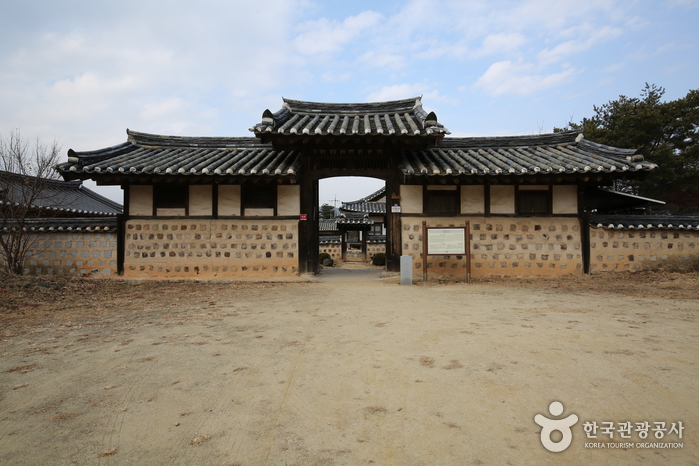
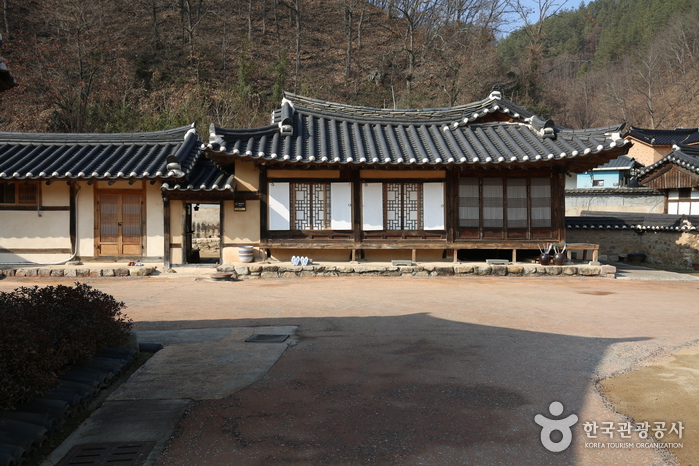
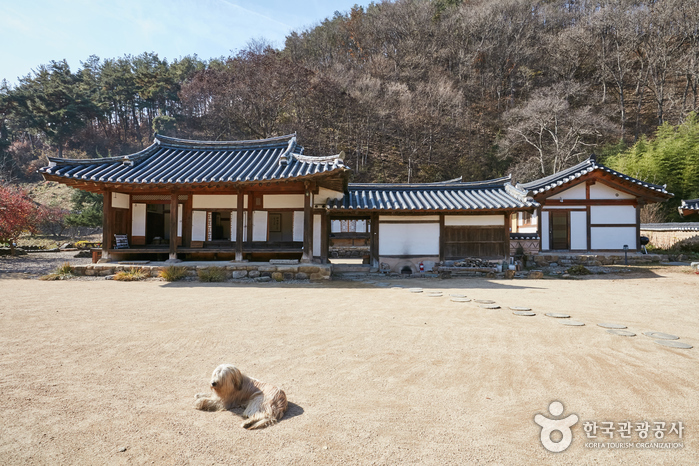
 Français
Français
 한국어
한국어 English
English 日本語
日本語 中文(简体)
中文(简体) Deutsch
Deutsch Español
Español Русский
Русский